Related Research Articles
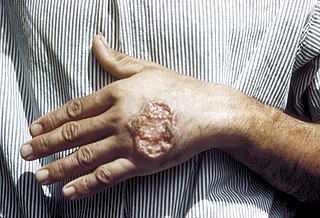
Leishmaniasis is a wide array of clinical manifestations caused by parasites of the trypanosome genus Leishmania. It is generally spread through the bite of phlebotomine sandflies, Phlebotomus and Lutzomyia, and occurs most frequently in the tropics and sub-tropics of Africa, Asia, the Americas, and southern Europe. The disease can present in three main ways: cutaneous, mucocutaneous, or visceral. The cutaneous form presents with skin ulcers, while the mucocutaneous form presents with ulcers of the skin, mouth, and nose. The visceral form starts with skin ulcers and later presents with fever, low count of red blood cells, and enlarged spleen and liver.
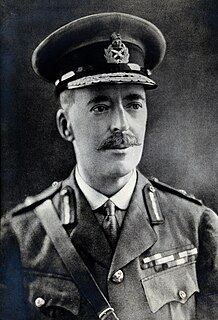
Lieutenant-General Sir William Boog Leishman, was a Scottish pathologist and British Army medical officer. He was Director-General of Army Medical Services from 1923 to 1926.
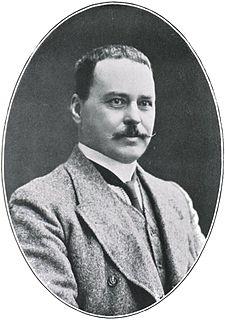
Sir Ronald Ross was a British medical doctor who received the Nobel Prize for Physiology or Medicine in 1902 for his work on the transmission of malaria, becoming the first British Nobel laureate, and the first born outside Europe. His discovery of the malarial parasite in the gastrointestinal tract of a mosquito in 1897 proved that malaria was transmitted by mosquitoes, and laid the foundation for the method of combating the disease. He was a polymath, writing a number of poems, published several novels, and composed songs. He was also an amateur artist and natural mathematician. He worked in the Indian Medical Service for 25 years. It was during his service that he made the groundbreaking medical discovery. After resigning from his service in India, he joined the faculty of Liverpool School of Tropical Medicine, and continued as Professor and Chairman of Tropical Medicine of the institute for 10 years. In 1926 he became Director-in-Chief of the Ross Institute and Hospital for Tropical Diseases, which was established in honour of his works. He remained there until his death.

William Roxburgh FRSE FRCPE FLS was a Scottish surgeon and botanist who worked extensively in India, describing species and working on economic botany. He is known as the founding father of Indian botany. He published numerous works on Indian botany, illustrated by careful drawings made by Indian artists and accompanied by taxonomic descriptions of many plant species. Apart from the numerous species that he named, many species were named in his honour by his collaborators.

Visceral leishmaniasis (VL), also known as kala-azar, is the most severe form of leishmaniasis and, without proper diagnosis and treatment, is associated with high fatality. Leishmaniasis is a disease caused by protozoan parasites of the genus Leishmania.

Rai Bahadur Sir Upendranath Brahmachari was an Indian scientist and a leading medical practitioner of his time. He synthesised Urea-Stibamine (carbostibamide) in 1922 and determined that it was an effective treatment for Kala-azar.
Dr Chandreshwar Prasad "C P" Thakur is a former member of Rajya Sabha, a former minister in the Government of India, a physician and a leader of Bharatiya Janata Party. He was cabinet minister from 1999 to 2004 in the BJP government.

Charles Donovan MD was an Irish medical officer in the Indian Medical Service. He is best remembered for his discoveries of Leishmania donovani as the causative agent of visceral leishmaniasis, and Klebsiella granulomatis as that of donovanosis. The son of a judge in India, he was born in Calcutta and completed his primary education in India, and continued secondary school in Cork City, Ireland. He graduated in medicine from Trinity College, Dublin and joined the Indian Medical Service. He participated in British expeditions to Mandalay in Burma, Royapuram and Mangalore in India, Afghanistan, and finally Madras, where he spent the rest of his service. He was professor at Madras Medical College from 1898 until his retirement in 1919.
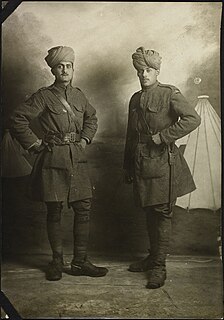
The Indian Medical Service (IMS) was a military medical service in British India, which also had some civilian functions. It served during the two World Wars, and remained in existence until the independence of India in 1947. Many of its officers, who were both British and Indian, served in civilian hospitals.

Sir James Ranald Martin was a British military surgeon in Colonial India who worked in the service of the Honourable East India Company and was instrumental in publicising the effects of deforestation, and finding links between human and environmental health.

Post-kala-azar dermal leishmaniasis (PKDL) is a complication of visceral leishmaniasis (VL); it is characterised by a macular, maculopapular, and nodular rash in a patient who has recovered from VL and who is otherwise well. The rash usually starts around the mouth from where it spreads to other parts of the body depending on severity.
Mohan Mishra was an Indian physician, known for his studies on Visceral leishmaniasis, and its treatment using Amphotericin B, regarded by many as a pioneering attempt. The Government of India honoured him, in 2014, with the award of Padma Shri, the fourth highest civilian award, for his contributions to the fields of medicine.

Robert Knowles was a British parasitologist, known for his discovery, with Biraj Mohan Das Gupta, of the Plasmodium species now known as Plasmodium knowlesi.
L. Everard Napier was a British tropical physician and professor of tropical medicine, known for his 1946 textbook Principles and Practice of Tropical Medicine and his 1923 book, coauthored by Ernest Muir, Kala Azar: A Handbook for Students and Practitioners.

Colonel Frederick Percival Mackie CSI, OBE, KHS, FRCP, FRCS was an English physician who was in the Indian Medical Service between 1901 and 1931 working on the incidence, transmission, and pathology of insect-borne tropical diseases. He discovered the vectors for relapsing fever and kala-azar. He had important administrative responsibilities in Iraq during the First World War and emerged as a leading figure in Indian medical science, public health, and tropical hygiene between the wars as director of the Haffkine Institute in Bombay (Mumbai).
Ernest Black Struthers (1886-1977) was a physician, researcher, educator, father, and Canadian medical missionary who worked in the Far East. Specifically, he accomplished most of his work in the Alice Memorial Hospital in Hong Kong, Cheeloo University in Jinan, China, and Severance Union Medical College in Seoul, Korea. Additionally, he is known for his contributions to the treatment of kala-azar, including his published chapter in Cecil’s Textbook of Medicine. He is described as a remarkable man, and a kind, outgoing, and endearing intellectual.
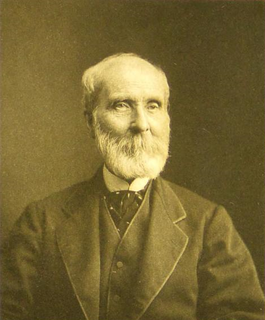
Edward Hare was a British surgeon and former Director-General of Hospitals in Bengal, India. Hare is best known for his medical work in using quinine for treatment of malaria fevers. He was also a vegetarianism activist.
Neglected tropical diseases in India are a group of bacterial, parasitic, viral, and fungal infections that are common in low income countries but receive little funding to address them. Neglected tropical diseases are common in India.
Kala azar in India refers to the special circumstances of the disease kala azar as it exists in India. Kala azar is a major health problem in India with an estimated 146,700 new cases per year as of 2012. In the disease a parasite causes sickness after migrating to internal organs such as the liver, spleen and bone marrow. If left untreated the disease almost always results in the death. Signs and symptoms include fever, weight loss, fatigue, anemia, and substantial swelling of the liver and spleen.
Lieutenant-Colonel Herbert Herbert, FRCS was a British ophthalmologist and officer in the Indian Medical Service (IMS), known for his work on trachoma, cataract and glaucoma. Later, he was vice-president of the Ophthalmological Society of the UK.
References
- 1 2 3 4 5 6 7 8 9 10 11 Cook, G C (1 August 2001). "William Twining (1790–1835): The First Accurate Clinical Descriptions of "Tropical Sprue" and Kala-Azar?". Journal of Medical Biography. 9 (3): 125–131. doi:10.1177/096777200100900301. PMID 11466511. S2CID 11910972.
- 1 2 Gupta, PCS (May 1947). "History of Kala-Azar in India". The Indian Medical Gazette. 82 (5): 281–286. PMC 5196405 . PMID 29015274.